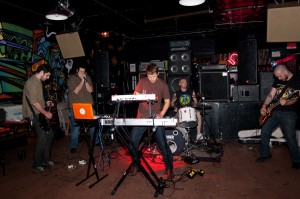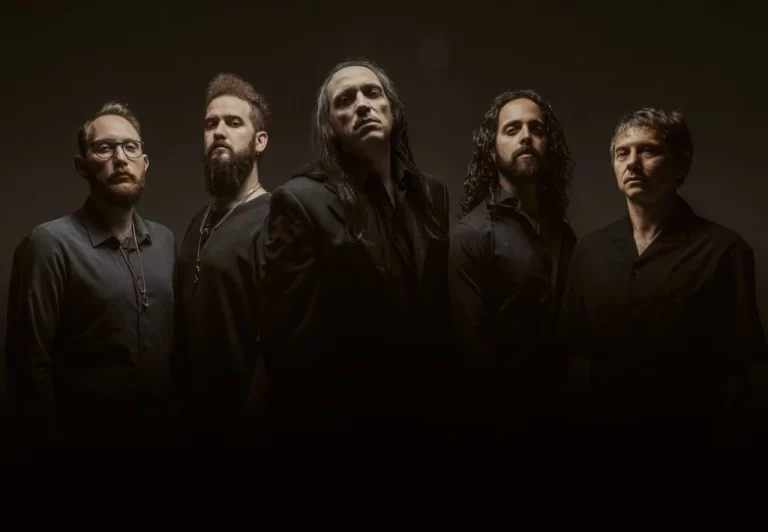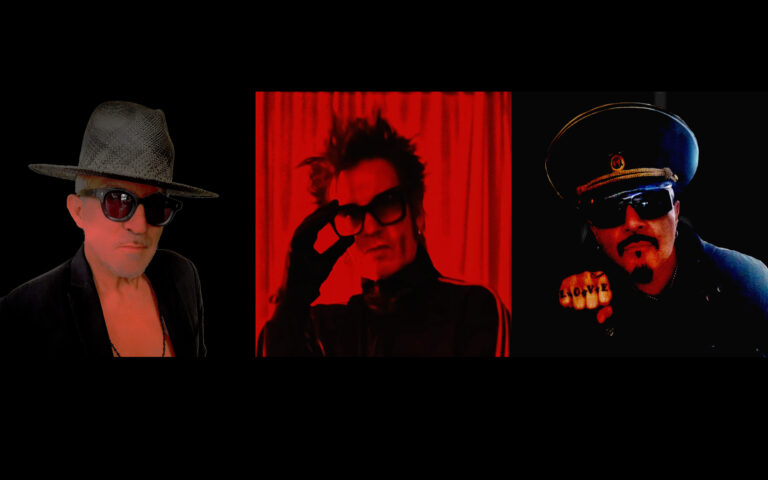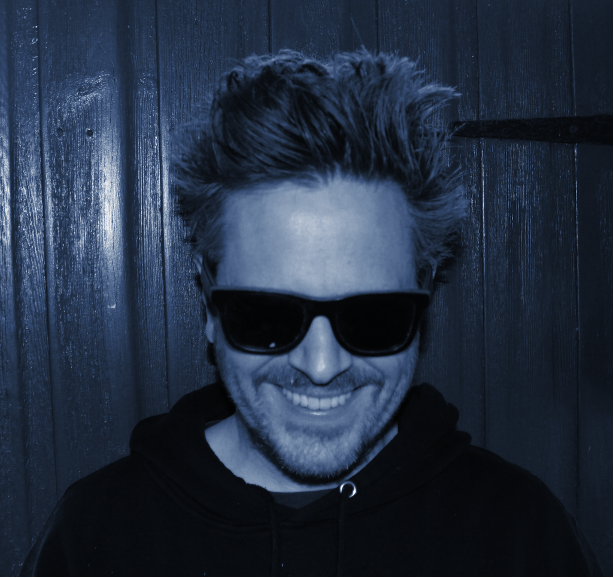The position of a reviewer can, from time to time, bring annoyances (the pile of absurdly average metal-core releases sitting on my desk testifies to that fact), but it can also be a privileged and exciting occupation that brings great rewards to those for whom music is a way of life. I had not heard of Souvenir’s Young America before their release appeared in my inbox, but I can say in all honesty that since hearing that release there have been few days where I haven’t listened to at least one of their tracks.
An instrumental band SYA are, in many ways, more emotionally honest than many bands who place a high value on lyrics while forgetting the possibilities of the music itself conveying the mood. SYA, in contrast, have only the music available to them and yet, over the space of a mere thirty minutes, they evoke desolate landscapes, haunting pastoral scenes and moments of desperate excitement. Moreover, instrumental music is never prescriptive and the listener has the freedom to conjure up their own moods and feelings from the music. The difference is rather like the contrast between reading a novel and watching the movie – where one allows imagination, the other kills it stone dead. As a result, SYA speak from and to the heart and their epic, beautiful music is something that all lovers of music should take the time to find and enjoy.
It is, then, with no small amount of pleasure, that I present this interview, conducted with the whole band, to you by way of introduction to one of the most hauntingly original and beautiful bands to grace the music scene in some time.
1. It seems that there have been a lot of instrumental bands coming to prominence in the last decade or so, what made you decide upon that path?
Ken Rayher (guitar) : Convenience.
Jonathan Lee (keyboards) : The band began as a two piece and after being the vocalist in every band I’d ever been in, it was nice just focusing on playing an instrument and trying out new ideas.
Graham Scala (guitar) : It wasn’t really an attempt to latch on to that sound or that scene at all. I’ve never been opposed to incorporating vocals, but there aren’t many singers who would fit. The harmonica picks up a lot of that slack though, often operating as a sort of vocalist.
JL : When we’re writing a song. I think of where I’d put vocals and where I’d keep them absent and that’s where the harmonica goes. Now that Noah has joined the band, he’s become our version of a vocalist.
Patrick DeWit (drums) : I enjoy music that focuses more on subtle notation, rhythm and ambience. i feel like singers sometimes crowd your idea of a song by setting the tone lyrically not musically.
2. And what influences do you incorporate to keep your sound innovative given the apparent limitations of the genre?
GS : We all bring different elements to the table. I won’t speak for everybody else’s influences, but I take a lot from Neil Young, Thin Lizzy, Amebix, ZZ Top, and Townes Van Zandt. I listen to a really wide variety of stuff, so I’m sure the Ethiopian jazz and the Japanese crust creep their way into my playing as well, but those are the more noticable names.
JL : All of our playing styles and personal tastes have been influenced by other musicians, so the sound is definitely created by finding harmony in our influences. Cerberus Shoal, Labradford, His Hero Is Gone, Miles Davis, Bruce Springsteen, Autechre, Neurosis, and Earth have all given me ideas over the past few years for things as simple as a tone.
Noah Saval (harmonica) : Coming from a pretty tame, mostly blues/rock/folk background, I found that this genre, at least for me and my instrument, was very freeing. I was inspired to pick up the harmonica by guys like Sugar Blue and John Popper, but I also have a lot of feeling for John Coltrane, Tom Waits, Ben Harper and another Richmond band, Tulsa Drone. But honestly, I feel like this band and these guys have all been the most influential on me, because I never really helped create anything before and having that chance in this band has pushed me as a musician. In fact, I think it actually made me one.
PD : Jazz and Rock and Roll pretty much. I try not to let too many band influences seep in because then I just kind of concentrate on trying to be the drummer from Sepultura which doesn’t always work out.
3. The new album is based upon a Rebecca Solnit book, what encouraged you to use this as your basis?
GS : We get the “western” tag a lot, and I feel like a lot of that is the similarity of some of our material to the soundtracks to Western movies. Not that the comparison is offbase, but those films are a largely stylized interpretation of a very real terrain, in both the geographical, cultural, and political senses. I think Rebecca Solnit is one of the best living cultural commentators and the way that she can bring together disparate sources when talking about whatever subject, but especially her writings on the desert in this case, are an inspiration to anybody who wants to better understand the way the world works.
JL : Graham had told me I should read this book and suggested it for the album. Savage Dreams is powerful, thought provoking prose. I used her themes from some of the chapters for the song and album titles. I thought the addition of the quote really gave the album a voice. An album about our often tragic relationship with both the past and present.She was kind enough to say we’d given an older work a new chance to have an exciting life in practice, which is a thrilling idea.
4. Are there other authors that you use, or would consider using, as influences?
GS : We’ve been down that path before. Almost every title off the first album was inspired by an author. I like adding the literary element, however superficial it may be. Art forms don’t exist in a vacuum, but so few people readily acknowledge the elements that they borrow from other media. I like the idea of providing a bibliography, however short it may be.
JL : Often when people describe our music, they paint a picture with words. That’s the reaction I like people to have. Our music inspired their references of not other music, but memories or landscapes or stories. So I think it only makes since to acknowledge other’s work who do the same for us. On the first album it was direct : JG Ballard, Henry Miller, Mark Twain, JRR Tolkien, and Carl Sagan. On An Ocean Without Water we told our own story but we were all reading Cormac McCarthy and that definitely had an influence.
5. Given that the album is largely conceptual, why did you decide to add extra tracks to the CD version? Obviously it offers added value, but did you not feel it would unbalance what you achieved with the overall journey of the album?
JL : People had written us quite a few times requesting these tracks be available on a digital format. I felt this was the opportunity to do it. A thank you for buying the new album.
NS : I was especially happy about that, but for completely selfish reasons. That first track of the September Songs EP (6:39) is the first thing I ever recorded with SYA and it got me invited back. Plus, I just really love that EP.
KR : I look at both September Songs and The Name of the Snake as documentations of transitional periods in the band, or maybe bridges between full-lengths, so I like the idea of having those old songs repackaged on the CD. It serves as a set of bookends for Ocean and a revisiting the September Songs material gets me thinking about what we’re going to do next.
GS : The extra tracks are older, and from a transitional period in our existence. However, we’re not stopping anybody from not listening to them. If you’re not into them – which is cool, they were originally intended only as a demo for the second LP – buy the vinyl, put it on your computer without those songs, or hit the stop button after the fourth song.
PD : They just didnt want Noah and I to have all the glory.
6. How did you come to get James Plotkin to mix your album?
JL : James actually mastered the record. He’s mastered all of the Anduin records I’ve released and I knew he’d do a great job with this material. He has such a great ear for warm low end. Good attention to small details. John Morand at Sound of Music recorded and mixed this record. He’s a wonderful engineer to work with because he promotes creativity and takes the time to understand your big picture. He’s been a big part of our sound.
7. I felt that the music you write is meant to be heard as an album rather than as random tracks separated from the whole – is that an accurate assessment and do you feel that that is a dying art thanks to the prevalence of MP3s?
PD : When you have 4 songs as an album I feel in is very important to make them flow cohesively, so track order is key.
GS : Absolutely. It drives me crazy when people I know have a killer album on their Ipod but it’s all out of order or missing songs (first world problems…). It kills the flow. Not to sound too nerdy about it, but 90% of the music I listen to is on vinyl, and that’s simply not a problem with that medium, one more reason I like it as much as I do.
KR : I think we’ve moved away from that in our writing process over the last year and a half. Our songs usually still end up with some sense of continuity, maybe because we’ve been playing together for so long, but I wouldn’t say that we’re really making a conscious effort to do so at this point.
JL : When we’re writing, I keep an end goal and a big picture in mind. It evolves over time, but I’m always thinking about it. What makes sense, how the songs flow together, what order things should be in, what themes have I been coming back to over and over. I think the album is the work of art. It’s the statement and it resonates with much greater intensity when that statement is cohesive and well constructed. I attempt to do that at least. Personally, If I don’t like a record all the way through, I probably don’t own it. The album may be a dying art in popular culture but I think it’s still very much alive. One thing I do miss though is the longer life of an album. Everything is so disposable now, moving too fast to appreciate and value things.
8. Is the writing process for instrumental music substantiually different to that of music with vocals? Do you have to concentrate on any particular aspect to make sure that the song remains structured and interesting?
GS : Trust me, we have to make as concerted an effort as humanly possible to keep the songs structured and interesting. I don’t think it’s appreciably more difficult though. I’ve only been in a handful of bands with experienced singers who worry about the way the song structure will impact their vocal approach. In those cases, they tend to be active contributors to the writing process, in the other cases they were punk rock singers who were less picky.
JL : It frees you up a lot. You really can do anything and go anywhere. But in the end all songs are the same, either well written or poorly written.
PD : The most important part (to me) to writing solid instrumental songs is dynamics. Some bands use vocals as a dynamic. We use other things. In the other bands I’m in that have singers, our songs are pretty dependent on having vocals. SYA can get away with it because of the guitar work and harmonica’s presence.
KR : I’ve only every been in one other band that’s much of anything outside of the practice space, and while there were vocals in that band they were always the very last thing to be added to a song, so in my experience it’s not that much difference. For me, writing is centered on working out a song structure that’s interesting and makes sense and trying to come up with catchy yet heavy guitar parts.
9. How much of your composition involves just jamming in the rehearsal room and seeing what comes together?
KR : Nearly 100% of it.
PD : For every good riff and groove there are countless other parts that get scrapped. We have jammed through parts for hours before deciding they don’t work, and then we just move on.
GS : That’s where all the songs are born. They start fairly intuitively and then we chisel away at them until they’re not a shambling mess anymore, most of the time at least.
JL : We just see what comes out, acknowledge what’s interesting, and stretch and mold it until it sounds the way we want. Now that 6 years have gone by we definitely have a process, however chaotic it may be, and it still works with the newly expanded line up.
NS : That’s really the only way to do it as far as I’m concerned. Plus we’re pretty supportive of each other, so that helps.
10. How long did it take to record ‘The Name Of The Snake’?
JL : A month, working on and off. It was really nice to have a few days off in between each major phase. We’ve never had that luxery before. I love being in the studio and it’s nice to take the time you need to get it just how you want it.
11. You have astonishing art work complimenting your releases, who deals with the design work for the band and do you take an active hand in the presentation of your work or leave it to the artist in question?
JL: For the first album, Ken and I painted the cover together. For the last couple of releases I’ve work on the concept and sketch out the artwork. Then I hand everything over to Sasha Barr, who reinterprets it and puts it all together. He does an amazing job of giving an album an iconic look.
12. Is there any chance of you appearing in the UK?
GS : Well, none of us really have any money. But if somebody wants to pay for us to fly over, we’ll be there in a heartbeat.
JL : Money is the real issue. If we had someone help us get over there and book the shows, we’d do it without a doubt.
KR : I’ve had a blast every time I’ve been to the UK and I’d love to come play music there for a change. I wouldn’t rule it out.
PD : Bring on the vegan beans and toast.
SOUVENIR’S YOUNG AMERICA
www.myspace.com/souvenirsyoungamerica
www.facebook.com/souvenirsyoungamerica
In the name of the snake is available now.






